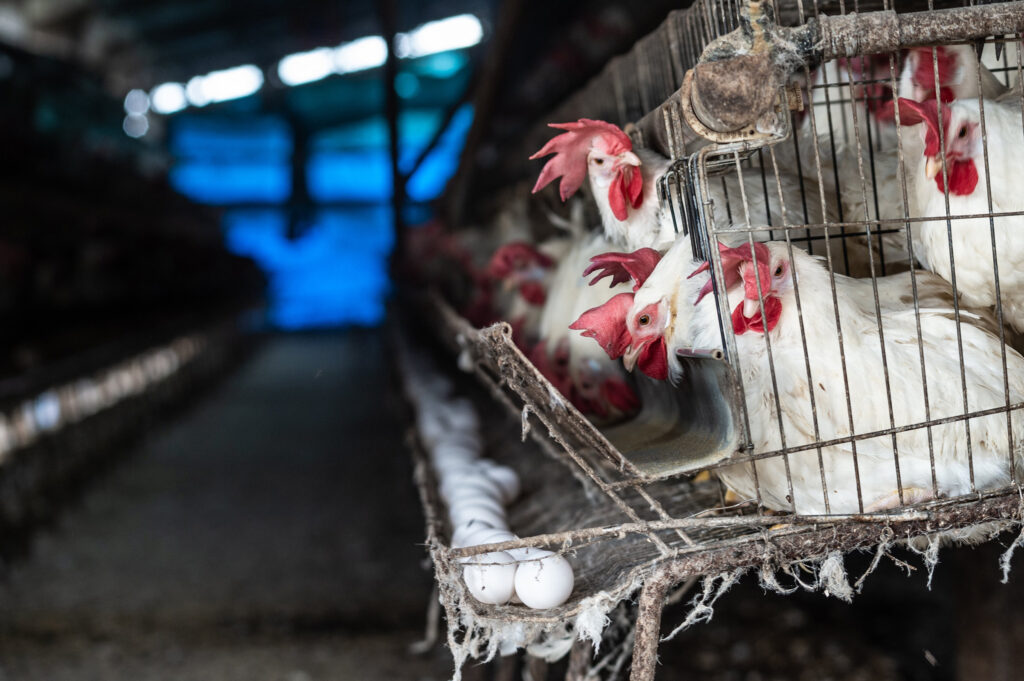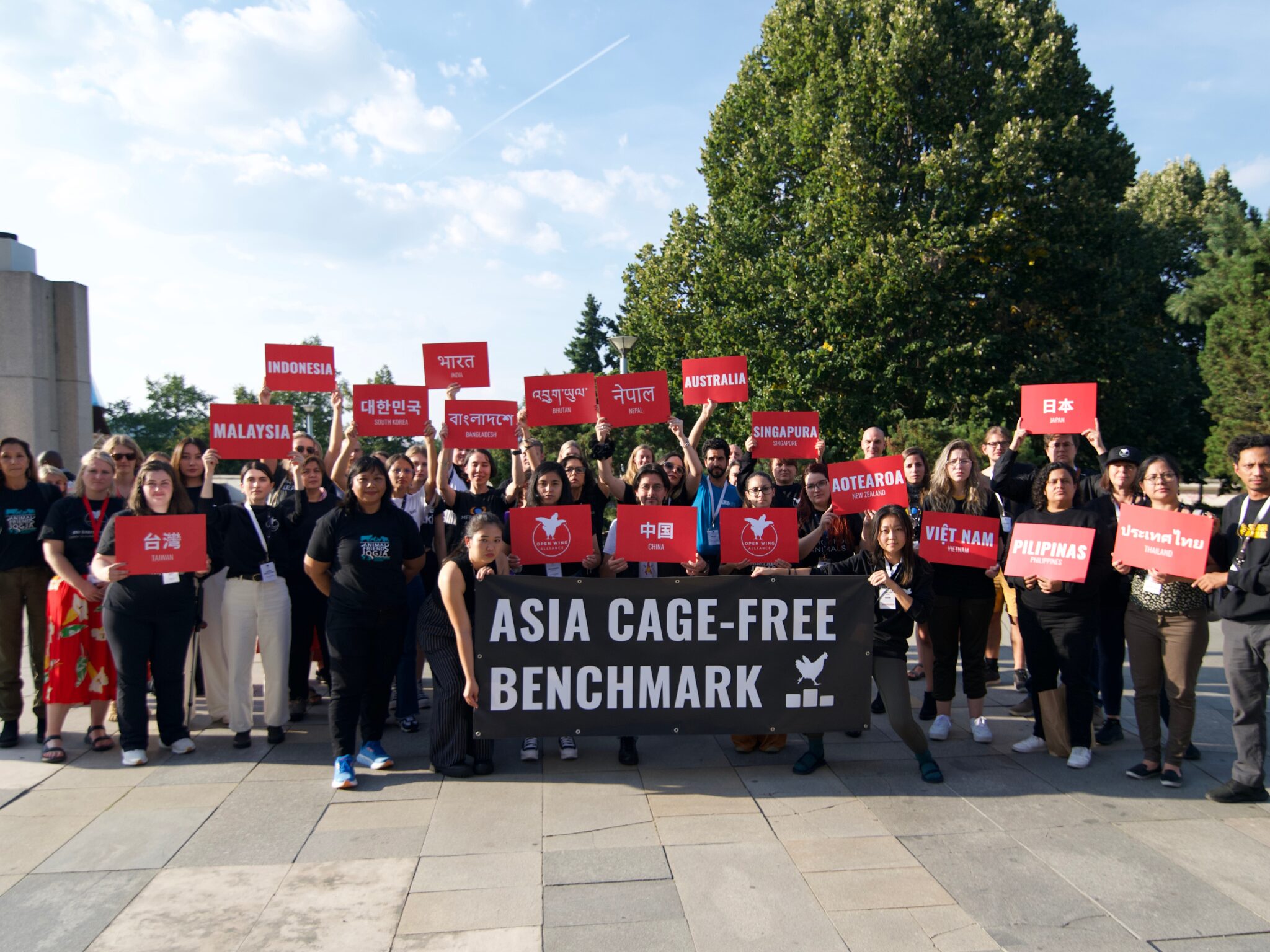Cage-Free Policy: New Zealand & Israel Lead APAC’s Animal Welfare Standards, While SE Asia Lags
4 Mins Read
New Zealand has the most robust cage-free policy framework across Asia-Pacific, while Bangladesh, Malaysia and Vietnam have the joint worst, according to a new 17-country report.
With consumer unease over animal welfare increasing – a 2022 study showed that 86% of people in eight Asia-Pacific (APAC) countries were significantly concerned about farmed animal welfare – and more and more companies committing to cage-free sourcing for eggs, a new report assesses the government progress in 17 APAC nations on this topic.
The research, carried out by the Open Wing Alliance (OWA), a global coalition of 100 organisations spanning 72 countries, points out how Asia is home to a majority (63%) of the world’s commercial egg-laying hens, numbering three billion, about 90% of whom spend their lives in cages. Six of the world’s 10 largest egg consumers are Asian countries, which prompted OWA to carry out research over three pillars.
These entail Ending Cages, which assesses efforts to end caged farming (including bans, phaseouts, and current proportion of caged birds); Policy Framework, referring to a country’s policies and subsidies to transition away from caged farming; and Welfare Standards, which considers both cage-free and general laying hen welfare standards.
APAC has a long way to go for cage-free welfare

OWA ranked countries across the three pillars, with a maximum score of 140 points – 72 for Ending Cages, 32 for Policy Frameworks, and 36 for Welfare Standards. Cumulatively, New Zealand was identified as the country with the best cage-free standards, racking up a points total of 86. The Pacific topped the Ending Cages pillar, was joint-highest in the Welfare Standards criterion (alongside Israel), and came second (behind South Korea) for Policy Frameworks.
Israel was the second-best overall with 78 points, followed by Australia with 62 and Bhutan with 44. On the other end of the spectrum, Bangladesh, Malaysia and Vietnam ranked joint-lowest in the Cage-Free Benchmark with four points, trailing Singapore (six), Nepal (6.5), and Japan (eight).
“Hens in cages are deprived of the ability to express their fundamental needs, including preening, dust bathing, perching, nesting, foraging, or even the ability to fully spread their wings,” said Jonathon Tree, director of campaigns and international affairs at the Environment & Animal Society Taiwan, an OWA member.
“A comprehensive review of the literature by the European Food Safety Authority frankly determined that ‘cage[s] should not be used’,” he added, although the EU itself has walked back on its promise to ban caged farming after pressure from animal agriculture lobby groups.
In APAC too, governments have a long way to go to present supportive conditions to encourage the cage-free transition, given that the average score was just 26.9 out of a possible score of 140. Countries in this region performed best on the Welfare Standards metric, earning an average of 32% of the maximum points available for this pillar. In comparison, they only obtained 24% of the maximum points for Policy Framework and 11% for Ending Cages on average.
Government support crucial for APAC’s cage-free transition

The Cage-Free Benchmark shows that there isn’t a direct correlation between wealth and government support for cage-free practices, explaining how Bhutan ranks fourth with a per capita GDP of $3,266, but wealthier nations like Singapore and Japan are among the bottom of the rankings.
It also highlights regional differences within APAC. Nations in South and West Asia performed the strongest, with average scores of 30.7, followed by Southeast Asia, Australia and New Zealand (SEAANZ) with 27.3. East Asian states, meanwhile, have the lowest average ratings at 21.3.
South and West Asian countries displayed the highest progress towards Ending Cages (13.6), while SEAANZ showcased the most comprehensive Welfare Standards (12.9). And despite being the worst-performing region overall, East Asia had the most robust Policy Frameworks (13.0).
The report concluded that effective enforcement of policies is “sorely lacking”. While 14 of the 17 countries have some form of hen welfare or cage-free standards, less than a third have implemented financial penalties for violations. Moreover, only four have publicly documented evidence of effective enforcement programmes.
“It is critical that governments in Asia use all of the tools at their disposal to support the cage-free transition. Corporate cage-free commitments alone demand that billions of eggs in Asia are produced in cage-free systems in the coming decade; governments should act within their power to help producers meet and seize this opportunity,” stated the report.
It outlined strong industry backing by citing a 2022 study of Asian egg farmers, which found that 72% believed more support is needed to adopt cage-free systems, with a majority looking at governments to provide this support. The report did highlight some positive progress on the part of governments, including the implementation of bans on barren battery cage systems in Bhutan and New Zealand, technical training and support initiatives in Indonesia and the Philippines, and effective publicly documented enforcement in South Korea and Taiwan.
“It is imperative that Asian governments actively support the transition towards cage-free farming to ensure a seamless shift for consumers and industry stakeholders,” said Tree. “By providing regulatory clarity for corporate buyers, industry can move towards higher animal welfare standards.”



